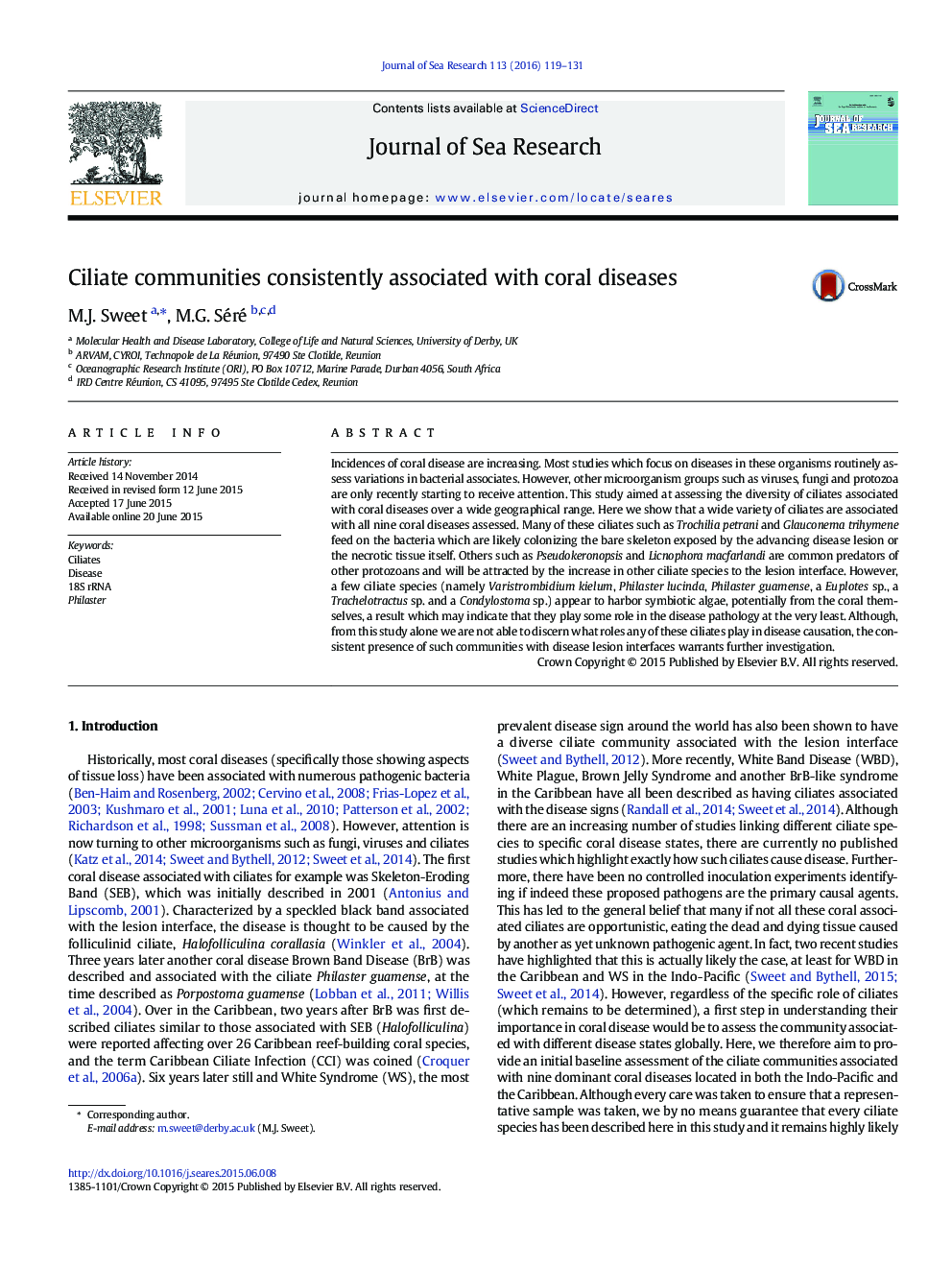| کد مقاله | کد نشریه | سال انتشار | مقاله انگلیسی | نسخه تمام متن |
|---|---|---|---|---|
| 6387277 | 1627462 | 2016 | 13 صفحه PDF | دانلود رایگان |
- This is the first study to look at ciliate diversity associated with corals over a large geographical area
- We found a large diversity associated with all nine diseases studied (graphical abstract)
- Although many are likely bacterivores, a subset which appeared to digest the corals symbiotic algae
- One species in particular, Philaster lucinda, was found on all but one of the coral diseases
- There is little geographical variation, with many species found across all regions studied.
Incidences of coral disease are increasing. Most studies which focus on diseases in these organisms routinely assess variations in bacterial associates. However, other microorganism groups such as viruses, fungi and protozoa are only recently starting to receive attention. This study aimed at assessing the diversity of ciliates associated with coral diseases over a wide geographical range. Here we show that a wide variety of ciliates are associated with all nine coral diseases assessed. Many of these ciliates such as Trochilia petrani and Glauconema trihymene feed on the bacteria which are likely colonizing the bare skeleton exposed by the advancing disease lesion or the necrotic tissue itself. Others such as Pseudokeronopsis and Licnophora macfarlandi are common predators of other protozoans and will be attracted by the increase in other ciliate species to the lesion interface. However, a few ciliate species (namely Varistrombidium kielum, Philaster lucinda, Philaster guamense, a Euplotes sp., a Trachelotractus sp. and a Condylostoma sp.) appear to harbor symbiotic algae, potentially from the coral themselves, a result which may indicate that they play some role in the disease pathology at the very least. Although, from this study alone we are not able to discern what roles any of these ciliates play in disease causation, the consistent presence of such communities with disease lesion interfaces warrants further investigation.
Journal: Journal of Sea Research - Volume 113, July 2016, Pages 119-131
